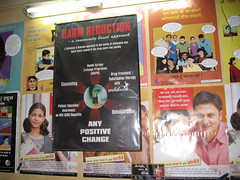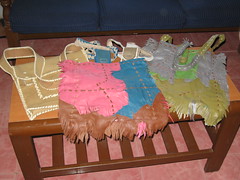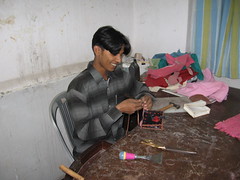 In doing an initial mapping of groups we could speak to regarding conditions inside India’s prisons, the team decided to focus on three groups: drug users, sex workers, and members of the MSM (men who have sex with men) community (sodomy is currently against the law in India, and violators are prosecuted). This week so far we’ve focused on drug users, and in particular drug users recently released from prison and in recovery centers.
In doing an initial mapping of groups we could speak to regarding conditions inside India’s prisons, the team decided to focus on three groups: drug users, sex workers, and members of the MSM (men who have sex with men) community (sodomy is currently against the law in India, and violators are prosecuted). This week so far we’ve focused on drug users, and in particular drug users recently released from prison and in recovery centers. Today we traveled to an NGO that works with drug users on the streets, and also has its own small prison barrack inside one of Mumbai’s more populated prisons, Arthur Road Jail. The team interviewed three staff members (two peer counselors, and one HIV/AIDS educator) who regularly have access to India’s prisons. The staff members were quick to note that they have very little access inside the prisons, short of their own small barrack, which holds 30 people.
The staff members noted that very seldom are foreigners allowed inside the prisons, and sometimes it is difficult for Indian women to enter, even if they are lawyers (if they are allowed to enter, their access is extremely restricted and they are closely monitored). The staff echoed some of the same comments we heard yesterday about access to drugs and a mafia-like hierarchy within the prisons. The staff also spoke dramatically of the overcrowded cells in the prisons. Despite the fact that they have their own barrack of just 35-40 inmates, most of the other barracks contain upwards of 100 prisoners each (they are made to hold no more than 40).
After the interviews, two of us spoke with a 25-year-old man who, since becoming clean a year and a half ago, has worked for the NGO making leather bags from scraps of leather and fabric. These bags are sold in tourist markets in Goa, India. The bags are beautiful (you can see a sampling of them in the picture), and the man’s story is heartbreaking.
 He moved to Mumbai when he was 8, and soon thereafter (age 10) started using drugs. First cannabis, then brown sugar (a raw form of heroin). To pay for his brown sugar he would steal, but was beaten up by police officers several times for theft. At 17 he went to prison for the first time, and for the next six years went in and out of jail on drug charges. Around age 23, he entered the needle exchange program at the NGO (first he was actually admitted to their shelter, with wounds so bad on his hands that he had maggots in them), where he found out he was HIV+. For the past year and a half he has struggled to stay clean, and making the leather bags has given him something to give back to the organization that helped him. He still lives on a footpath near a train station, but he’s now sober. “I have it in my heart to help others now,” he said to us.
He moved to Mumbai when he was 8, and soon thereafter (age 10) started using drugs. First cannabis, then brown sugar (a raw form of heroin). To pay for his brown sugar he would steal, but was beaten up by police officers several times for theft. At 17 he went to prison for the first time, and for the next six years went in and out of jail on drug charges. Around age 23, he entered the needle exchange program at the NGO (first he was actually admitted to their shelter, with wounds so bad on his hands that he had maggots in them), where he found out he was HIV+. For the past year and a half he has struggled to stay clean, and making the leather bags has given him something to give back to the organization that helped him. He still lives on a footpath near a train station, but he’s now sober. “I have it in my heart to help others now,” he said to us.  After purchasing a few of his bags, the team departed for our office and spent the next four hours vigorously working on processing interview notes, writing summaries, and finalizing a “leads list” of other organizations and activists we could be in touch with. Around 8pm we left for the night, had dinner in the Fort district of Mumbai (the area that houses the Mumbai High Court), and departed for our flat, where we finished with an hour-long team meeting to plan the next day.
After purchasing a few of his bags, the team departed for our office and spent the next four hours vigorously working on processing interview notes, writing summaries, and finalizing a “leads list” of other organizations and activists we could be in touch with. Around 8pm we left for the night, had dinner in the Fort district of Mumbai (the area that houses the Mumbai High Court), and departed for our flat, where we finished with an hour-long team meeting to plan the next day.
